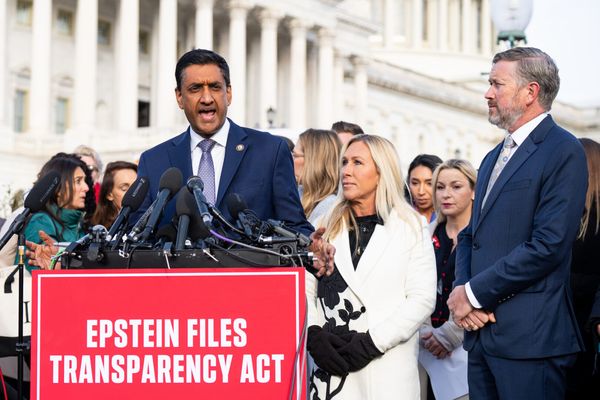
Bud Moses is all too aware of the longer, hotter summers impacting his community in Sydney’s west.
As black summer bushfires raged on 4 January 2020, Penrith was sweltering in temperatures of 48.9C, making it the hottest place on the planet that day. It was just one of a growing number of above-40C days Moses has witnessed in recent years.
“We’ve seen the heat get a lot worse – it’s one of the clear physical attributes of climate change that most people seem to understand,” Moses, the western Sydney organiser of the Nature Conservation Council of New South Wales, said.
“People talk about what impacts them – and here, that’s heatwaves, flooding and bushfires,” he said of the locals he meets when running Tabiea, a joint Nature Conservation Council and Arab Council Australia climate change awareness campaign targeting western Sydney’s culturally diverse community.
“It’s a lot for them to take physically and mentally.”
It’s no surprise to him that Sydney’s west and south have emerged as “heat-health risk” hotspots in the federal government’s long-awaited national climate risk assessment.
• Sign up to get climate and environment editor Adam Morton’s Clear Air column as a free newsletter
Warming across the Australian continent has already reached 1.5C, Monday’s report by the Australian Climate Service (ACS) noted. Under a 3C scenario, the number of heat-related deaths in Sydney increases by 444%.
With heatwaves causing more deaths in Australia than all other extreme events combined, the report found Blacktown and the outer west are some of Sydney’s most exposed suburbs when considering the health risks associated with ever-hotter summers.
Extreme heat may lead to higher rates of heat-related illness which in turn will put additional strain on emergency services and hospital infrastructure, according to the assessment.
Moses said many in his community live in rented or social housing and do not have access to air conditioning – and those who do limit its use because of cost-of-living pressures. The area needed shaded bus stops, more green space and better environmental standards in rented homes, he said.
“If you talk to doctors in relation to heat stress, all the forecasts are showing that it’s going to have an impact, especially on old and vulnerable people,” Moses said.
A temperature rise of 3C would, he said, “be dire”.
Dr Judith Landberg, head of the ACS, told a Senate committee on Tuesday the number of heat-related deaths in Sydney was currently between 80 and 117 annually.
The Blacktown mayor, Brad Bunting, said the report confirmed the experiences of and research undertaken by his council.
“Blacktown is on the frontline of extreme heat, and the national report shows how serious the risks are for our community,” he said in a statement.
The council is part of the Western Sydney Regional Organisation of Councils, which developed the 2021 Heat Smart Western Sydney plan to prepare for and respond to heatwaves. The Blue Mountains, Liverpool, Cumberland and Hawkesbury councils are also members.
“Urban heat is not just an environmental challenge. It affects health, liveability and how we plan our city,” Bunting said.
Heat-health risk is lowered by urban greening, according to the report, with the leafy, generally affluent suburbs of the northern beaches, north Sydney and Hornsby found to have lower heat-health risk. The city’s eastern suburbs have a moderate heat-health risk.
Dr Milton Speer, a meteorologist and fellow with the University Technology Sydney, said his research comparing weather observations from 1962 to 2021 between Observatory Hill on Sydney harbour and Richmond revealed the west was often 5C warmer.
In the west, one in 10 days exceeded 35.4C. On the coast, one in 10 days was above 30.4C. One in 20 days reached 37.8C or more in the west.
Speer said western Sydney was further from sea breezes which can regulate the heat – “and the fact that there are fewer trees is very important”.
“Elderly people especially can suffer heat stress if exposed outside for long enough or at night if there’s no air con during heatwaves,” he said.
Suburbs exposed to sea level rise
Alongside rising temperatures, Sydney faces the threat of rising sea levels.
Sea level rise, storm surges and extreme weather events make coastal cities particularly vulnerable given their extensive infrastructure, dense populations and economic significance, the report states.
Suburbs with increased exposure to sea level rise include the inner-city suburbs of Darlinghurst, Haymarket, Millers Point, Double Bay and Darling Point, according to the assessment.
Kogarah, in Sydney’s south, was also named – despite, like Darlinghurst, not being situated on the shoreline. Darlinghurst is generally about 50 metres above sea level, while Kogarah’s elevation is about 30 metres.
It is understood the report’s analysis included areas within 10km of the coastline and that the effects of sea level rise were not constrained to the coastline.
The Australian National University emeritus professor and chair of the assessment’s expert advisory committee, Mark Howden, said its authors had taken a conservative approach which did not reflect current expert assessments of future sea level rise.
In a 3C scenario, the sea level would rise 54cm, according to the report.
A separate research paper had put sea level rise at a median point of 111cm within a range of 62cm-238cm in a high emissions scenario, he said.
Saltwater intrusions into freshwater supplies
The City of Sydney lord mayor, Clover Moore, said her council, which covers some of the country’s most densely populated postcodes, was doing its “best to ensure the city remains climate-resilient and adapts to additional extreme heat, drought, storms, flash flooding and rising sea levels” – but that heat was its priority.
“We are most concerned about the impact of hotter days, for longer periods,” she said in a statement.
“We are currently in the process of updating our floodplain management plans to prepare the city for sea level rise, while also advocating for state government guidance to be updated to reflect recent climate modelling.”
She said addressing sea level rise was a bigger issue than any one council could address alone and should be led by state and federal governments.
The assessment suggests the effect of Sydney’s rising sea level may be more widespread, with saltwater intrusions threatening freshwater supplies and water security across the city.
A spokesperson for the Georges River council, which covers Kogarah, said in a statement the council was “committed to the current and future resilience” of the LGA and was actively planning for a climate-resilient future.
They said the council would “consider the insights” in the report.







